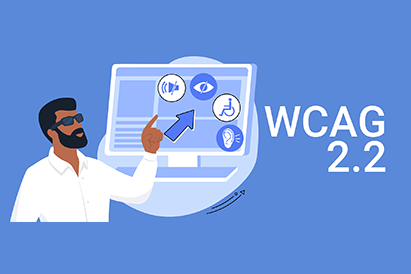Does AI mean the end of Instructional Designer in eLearning?
4 minutes to read

“Well, isn’t this just perfect? Just when we thought we could finally catch a breath after the pandemic, here comes another catastrophe!”
Technological advancements wait for nothing and no one. They are also decidedly unsympathetic when it comes to the feelings of complacent incumbents and their entitled notions about what they do and don’t deserve.
The learner was, is, and will forever be the driving force behind innovation in eLearning. It’s no surprise that artificial intelligence (AI) is now being leveraged to enhance the instructional design process.
However, as always when significant technological advancements bring benefits to learners, there are concerns about potential job threats. Mainstream media has long been feeding the masses with the narrative that “robots are taking over,” making it easy to get distracted by their partially-informed and lazy opinions.
As instructional designers, we must delve deeper to gain a true understanding of what’s happening and who the likely winners and losers will be as AI becomes a more significant part of eLearning.
So, how will artificial intelligence affect instructional designers in the eLearning realm?
Are AI and instructional design compatible?
It’s evident that AI and instructional design can form a logical and mutually beneficial partnership. The significant growth in eLearning has attracted the attention of machine learning startups, exploring ways to contribute and improve the field.Currently, AI is making the job of instructional designers faster and yielding better results. By embracing AI, designers can offload much of the heavy lifting to technology, allowing them to focus on what they excel at—the aspects that truly matter to learners. AI can automate tasks like finding relevant images that align with a brand, eliminating the hassle of sifting through thousands of options. Instead, designers can concentrate on crafting a compelling learning experience through tone, message, and overall feel. Wouldn’t you rather have your team working on that than spending endless hours searching for generic stock photos of “people looking engaged in a learning environment”?
AI can lay the groundwork, consider client preferences, and handle time-intensive tasks. It serves as a valuable tool to free up precious design time for instructional designers. Skilled designers understand that they won’t lose control or be replaced by AI. They still guide the direction and retain decision-making power. The difference is that they now have more time to focus on strategic choices.
The power of creativity
Creativity, the essence of instructional design, remains an ability exclusive to us mere mortals—at least for now. Machine learning relies on past data and patterns, meaning “new” designs will be based on what has been done before. While there may be degrees of difference, AI isn’t capable of breaking entirely new ground with ingenious and customized creations to address complex learning challenges. For such cases, you’ll still need your talented human instructional designers.Is this the end for instructional design?
Before addressing this question, let’s take a moment to look back on recent history. Did advanced technology completely eliminate the need for bookkeepers? Did Spotify truly eradicate the role of musicians? And what about content creators—weren’t their positions supposed to be made obsolete by the rise of easily accessible content? The truth is, even in the presence of cutting-edge technology, certain aspects remain beyond replication.In the same vein, can we expect AI to replace instructional designers in the eLearning industry? Probably not. While routine tasks might be automated, particularly for projects with limited budgets, the realm of creative instructional design is likely to retain its dependence on human ingenuity—for the foreseeable future.
Why worry then?
Instead of worrying about our place in the creative field, we should ask ourselves if we, as instructional designers, know enough about AI to either seek alternative employment or find ways to integrate it more effectively into our future plans. The design industry loves to discuss trends, but are we merely engaging in this conversation to appear informed and on top of current issues?Looking ahead, we should consider ourselves fortunate to be alive during a time like this, witnessing how technology revolutionizes and enhances our lives every day. The pace of change has never been faster. With AI, we have only scratched the surface, and there is much more to come—rapidly. Let’s embrace machine learning as an incredible tool, a potent addition that enables us humans to perform at our creative best. It can be our ally if we allow it.
LET’S CONNECT TODAY TO LEARN HOW WE CAN ASSIST YOU IN HARNESSING THE POWER OF DIGITAL TECHNOLOGY?
Let’s Talk


